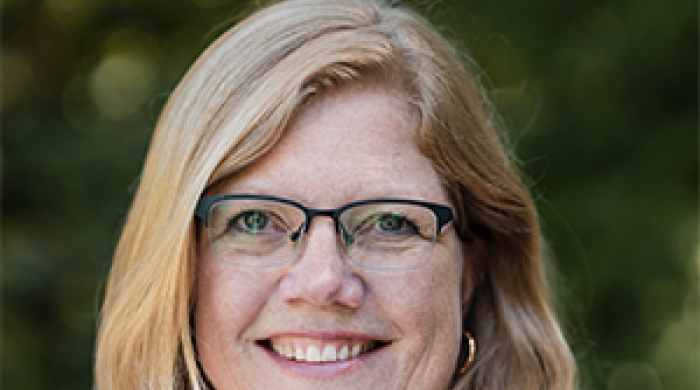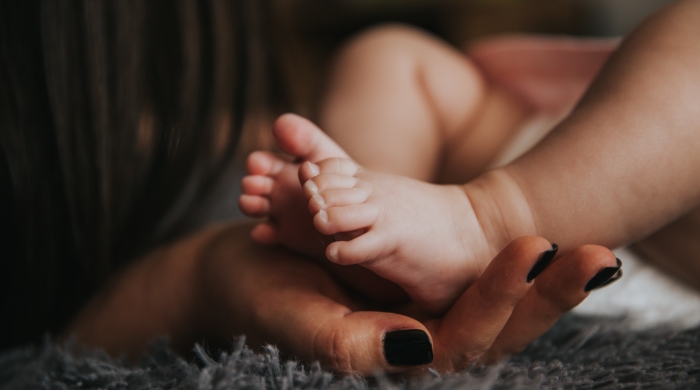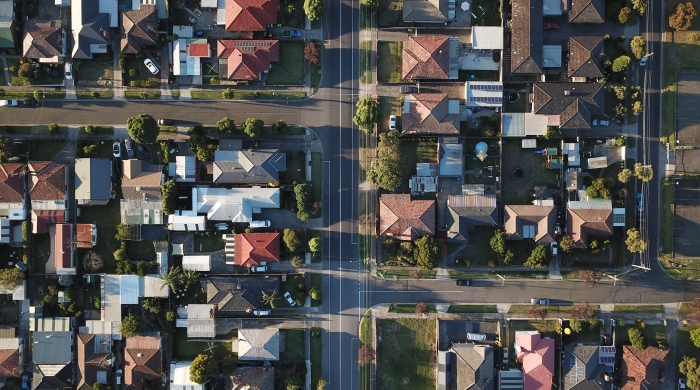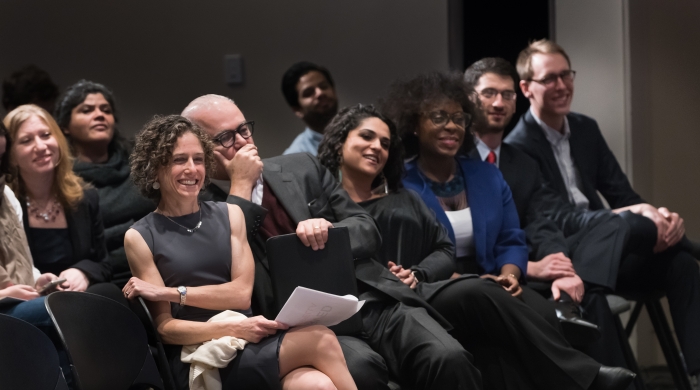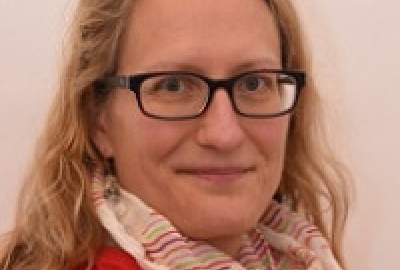
In 2019, Drs. Susannah Levi and Daphna Harel received a seed award for their project, "High Variability Phonetic Training as a Mechanism for Improving Underlying Reading Skills in School-Age Children." On the Ground interviewed Dr. Levi on what came from the project, how COVID-19 impacted research, and what else might grow out of their seed award. This conversation was edited for length and clarity.
How do you recruit participants? How have families or children reacted to the study?
I honestly feel like I got really lucky. There’s a school in Brooklyn that is dedicated to serving kids who have reading disorders and language disorders. I wrote to a variety of principals to try to pitch the idea of doing the study with them and this principal wrote back. I was totally shocked, because I've done this before and most people don't write back. She said, “Oh, that sounds super interesting. Can you tell me about it?” So I went out to the school to talk to her and I demoed the listening studies. I tried to explain the ways that we try to make it fun for the kids. I also always offer to come and do a Science of Speech Sounds unit in different classes as a way of giving back to the school, but no one's actually ever taken me up on it until this school did. It was super fun.
For these Science of Speech Sounds units, I brought a little handout packet to four classrooms, and we spent about an hour demoing things and showing the kids funny things about what's happening in their voice. We have them say certain sounds. We bring in straws to explain that when you make your speech sounds in a certain way, you have to blow a lot of air through your mouth like the straw. We talk a little bit about the ear and hearing. Then the last thing that we do is let the kids record their own names. They say their name, and then we print out an acoustic waveform for them and we write their name on it so that they can have a little certificate.
Can you walk us through how you administer the study?
If we're doing a study like this one, we want to first get what we call “baseline performance.” That’s how well someone would do without doing our intervention. Then we have kids listen to certain things, like different speech sounds, and then at the end we have the kids do that first activity again so we can measure change in performance.
In this study, the first task is where kids hear sounds along an acoustic continuum. All they're asked to do is tell us which sound it is. So here they just have to say, did it start with a P or a B? That's all that appears on the screen. This part usually takes only three to five minutes. With kids we don’t do anything longer than that without a break. We also give kids standardized tests for language ability and reading ability. These are things that are normed, so we can get a sense of how a child does relative to peers of the same age.
We interweave our experimental tasks with these standardized tests. Some things are on the computer, and then they can switch to another task on a table and go back and forth. This makes it less boring for the kids.
The training part or the exposure part is also the one where they just have to say if the word started with a ‘P’ or a ‘B’ sound, except that in this part they hear lots of different words and lots of different speakers, and that's what we call high variability training. They're hearing lots of variation. We'll do one chunk of this exposure that's maybe three to five minutes and then they'll do some standardized test and then they come back and do another chunk of the exposure part. We do multiple iterations of that. My hope had been that we would see a change in children’s responses to the speech sounds, that they would become more consistent with their responses so that they'd be willing to accept things that were slightly less good versions of a ‘P’ as a ‘P’ or slightly less good versions of B as a ‘B.’
How could your research impact dyslexia understanding and/or future inventions?
The kind of lab-based research that we do is often far away from actually being implemented.,. What I had hoped to show with this study is that it's possible to change performance on that very controlled task with relatively short exposure, that we could get kids to be more consistent in their responses to speech sounds. If I could demonstrate this result with these two speech sounds, I was hoping that the next step would be to try it with other speech sounds that differ in a different way.
The P and B sounds differ from each other in what we call the temporal domain. That means that the duration, or how long something is is different between the two sounds. But other speech sounds differ in what we call the spectral domain, that means that the difference is in the frequencies of the sounds. It turns out that the way we process duration or temporal information is different from how we process frequency or spectral information. So the next step would be to test our study with other sounds.
How did the pandemic impact your ability to conduct the study? How did you adapt your research?
I feel really lucky that we were able to get into this school in Fall of 2019 and do some data collection then and also into January. We managed to run about 12 kids through our study. It’s not a large sample but it did give me some ideas about what might need to get tweaked in a larger study.
All of the research that we do in my lab is done one-on-one with a kid or an adult coming in and then one or two researchers are in the room too. Obviously, that had to stop immediately with COVID. Over the summer, we started to figure out how we could move parts of this study and other studies online.
Before this IHDSC grant, I had been thinking about how young we could go with this, whether we could do a listening study with little kids even before they begin to read. But in that case they would need to be clicking on pictures, like of a bear and a pear as opposed to clicking on the letter symbols B and P. It takes kids a long time to understand that there's this weird shape and that relates to some sound. But my concern was that maybe doing the listening studies with letters versus doing them with pictures would sort of push people’s perception of the words differently. We know from other research with adults that you can sort of trick people into listening at the whole word level or into listening at the sound level depending on exactly what you ask them to do.
So I was worried that testing school-age kids with letter symbols and eventually testing little kids with pictures might be different not because of age, but because of exactly what we ask them to do. So for the IHDSC grant, I actually shifted once COVID hit to test out this idea, that listening at the word level, like pear or bear, would be different from listening to the sounds P and B. We tested this looking at adults and we just started the data analysis.
How has IHDSC seed funding served as a springboard for this research? What’s next?
What happens a lot in science is that it doesn't work the first time and then you have to fix things. Having this seed grant was incredibly helpful in being able to try something out that might fail. You have to have done the research to get the NIH grant, because they're not going to give you $5 million and then be like, “Oh, actually you should have done it the other way.” IHDSC’s seed grant has been really useful in that it has allowed more creativity and risk-taking with ideas. Sometimes you have to go through the process of really trying something out to find out if it's going to work or not.
The kind of research I do has a lot of front-end work. We have to record all the speech files and we have to cut all those speech files out of the longer file. There's a ton of stuff that has to happen before we can even run the first subject. So it's not like I can just take something out of the box and bring it somewhere. It takes a long time. What's nice is that now I have a lot of that stuff ready, so I feel like I can do something else next.
I think smaller grants like this are great for allowing people to think differently or try something new or try something that's risky. I'm incredibly appreciative to have had the opportunity to do something like that. Because science doesn’t always work on the first try.
Seed Award Stories
Seed Award Spotlight: Drs. Maaike Bouwmeester and Shilpa Sahay
Drs. Maaike Bouwmeester and Camilla Matuk received seed funding for their project, "Designing Frameworks for Multimedia Use in Informal STEM Programs for Young Learners." Dr. Bouwmeester and collaborator Dr. Shilpa Sahay discussed their nonprofit partnership and how their seed award served as a springboard for future research.
Reexamining the Link Between Pregnancy Intentions and Maternal, Newborn & Early Life Outcomes
Dr. Sarah Cowan received an IHDSC Seed Award in 2019-2020 for a project that reexamines and extends previous research on the links between pregnancy intentions and early life outcomes by analyzing data from the Pregnancy Risk Assessment Monitoring System (PRAMS) and 2-year follow-up data from six states.
The State of Black Suburbs
"For many folks, when I start to talk about the Black suburban experience, they think that it's this moment of meeting of white and Black, of distance coming together. But there's a far more nuanced and complicated reality." Drs. L'Heureux Lewis-McCoy and Kimberley Johnson received seed award funding for "The Black Suburban Governance Project" in 2020. Along with PhD candidate Kiara Douds, they discussed their research approach and early findings.
Learn About IHDSC Intitiatives
IHDSC Seed Award Program
IHDSC is committed to funding new projects that bridge multiple domains of expertise and further the mission of the Institute.
IHDSC Working Group Program
The IHDSC working group program gathers diverse faculty and researchers to achieve intellectual and practical goals aligned with our mission. Working groups are faculty-initiated, include scholars from multiple disciplines, and involve collaboration toward a specific goal.


